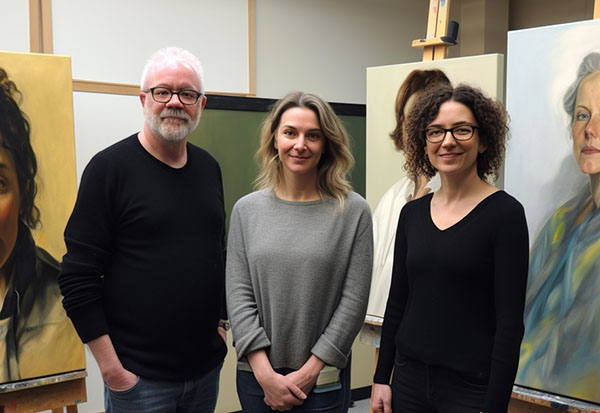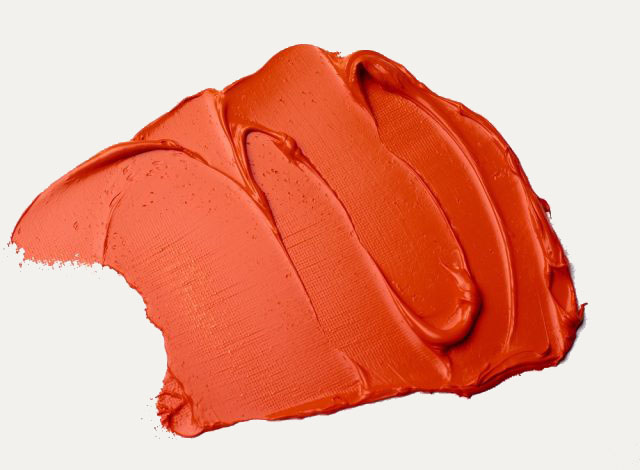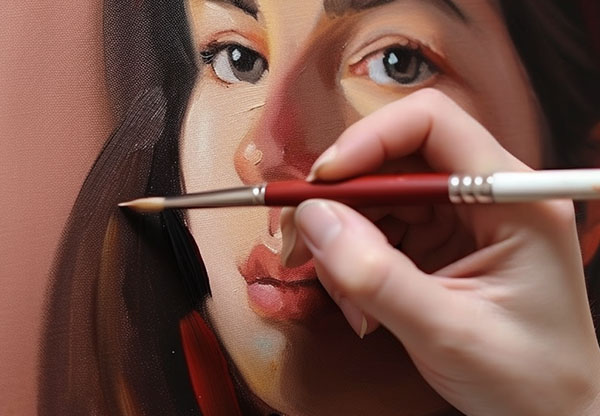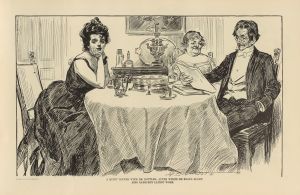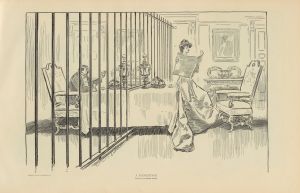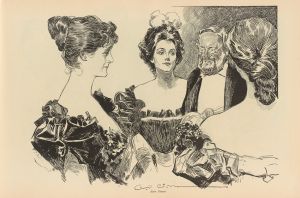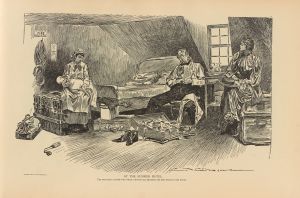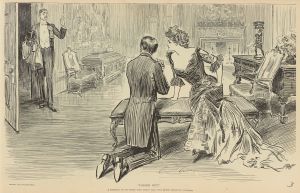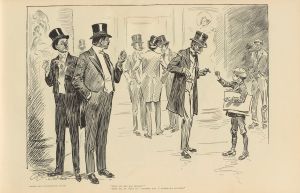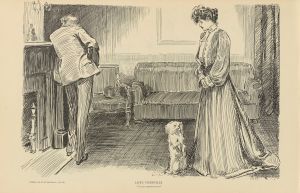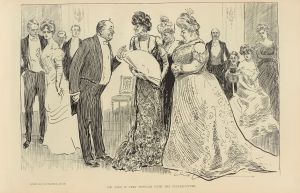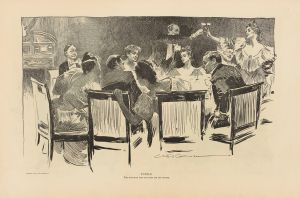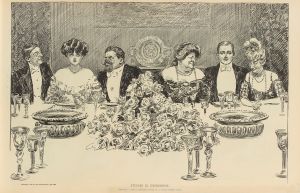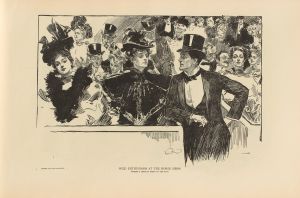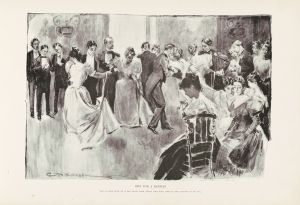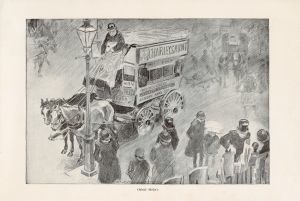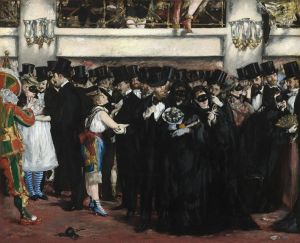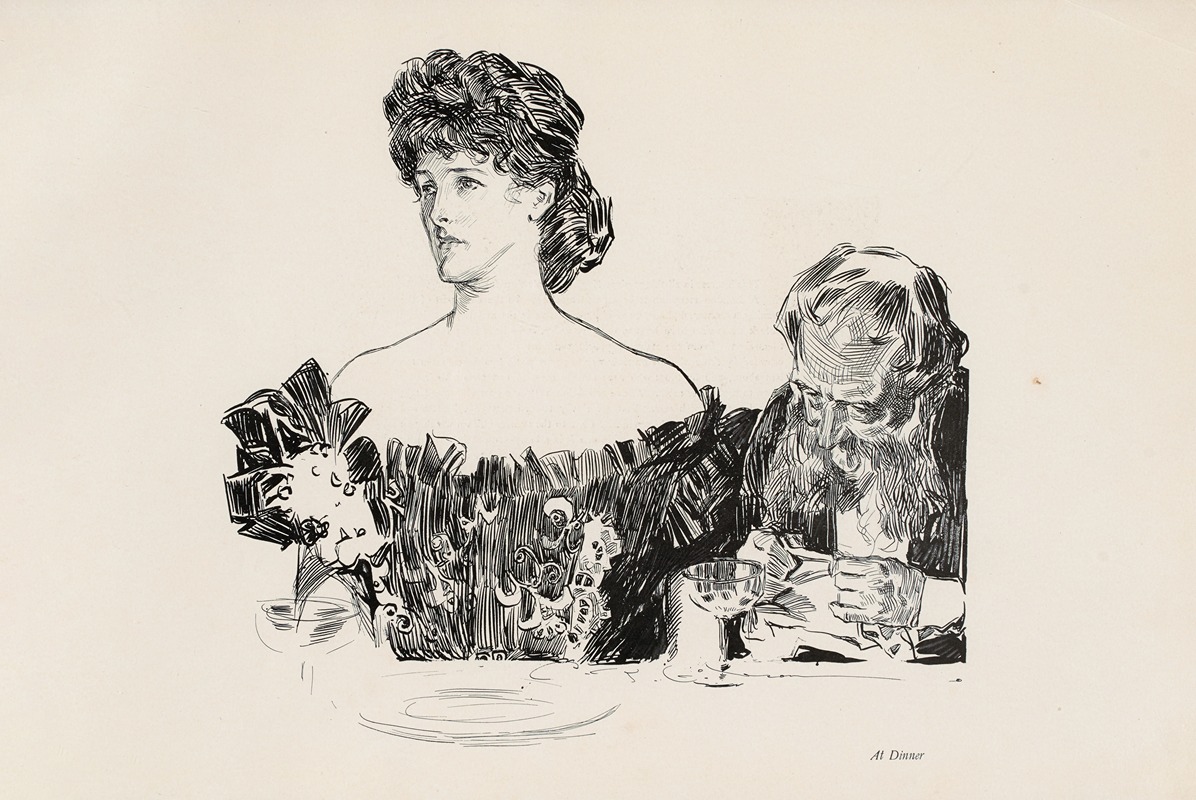
At Dinner
A hand-painted replica of Charles Dana Gibson’s masterpiece At Dinner, meticulously crafted by professional artists to capture the true essence of the original. Each piece is created with museum-quality canvas and rare mineral pigments, carefully painted by experienced artists with delicate brushstrokes and rich, layered colors to perfectly recreate the texture of the original artwork. Unlike machine-printed reproductions, this hand-painted version brings the painting to life, infused with the artist’s emotions and skill in every stroke. Whether for personal collection or home decoration, it instantly elevates the artistic atmosphere of any space.
Charles Dana Gibson was an influential American illustrator, best known for his creation of the "Gibson Girl," an iconic representation of the American woman at the turn of the 20th century. Among his many works, "At Dinner" stands out as a notable example of his artistic style and social commentary.
"At Dinner" is a pen-and-ink illustration that exemplifies Gibson's keen eye for detail and his ability to capture the nuances of social interactions. The artwork typically features a dining scene, often highlighting the dynamics between men and women in a social setting. Gibson's illustrations are characterized by their intricate line work and the expressive faces of his subjects, which convey a range of emotions and social cues.
The "Gibson Girl" was a central figure in many of Gibson's works, including "At Dinner." She embodied the idealized image of young, independent women of the time, characterized by her poise, beauty, and confidence. This figure became a cultural icon, representing a shift in societal norms and the evolving role of women in the early 1900s. In "At Dinner," the Gibson Girl is often depicted as the focal point of the scene, drawing the attention of her male counterparts and subtly challenging traditional gender roles.
Gibson's work, including "At Dinner," was published in popular magazines of the era, such as Life, Harper's Weekly, and Scribner's, reaching a wide audience and influencing public perceptions of gender and class. His illustrations were not only admired for their artistic merit but also for their commentary on the social mores of the time. Through his art, Gibson provided a window into the social dynamics of the upper and middle classes, often highlighting the complexities of courtship, marriage, and social status.
"At Dinner" reflects Gibson's ability to blend humor with social critique. The interactions between the characters in the illustration often contain subtle wit, capturing the sometimes superficial nature of social gatherings. This approach allowed Gibson to comment on the societal expectations placed on both men and women, as well as the performative aspects of social life.
Gibson's influence extended beyond his illustrations, as the "Gibson Girl" became a fashion trend, inspiring hairstyles, clothing, and attitudes among women of the time. The popularity of his work contributed to the broader cultural shifts occurring in the United States during the Progressive Era, as women began to assert more independence and challenge traditional roles.
In summary, "At Dinner" by Charles Dana Gibson is a quintessential example of his artistic style and social commentary. Through his detailed illustrations and the iconic "Gibson Girl," Gibson captured the essence of early 20th-century American society, offering insights into the evolving roles of men and women. His work remains a significant part of American art history, reflecting the cultural changes of his time and continuing to be appreciated for its artistic and historical value.

